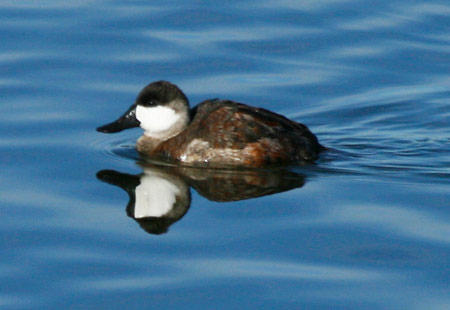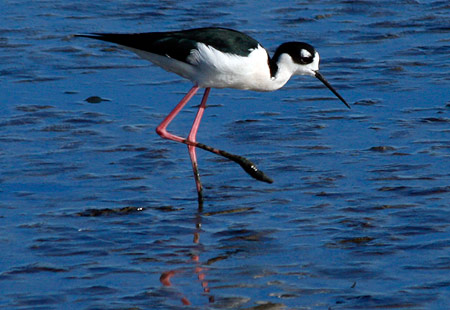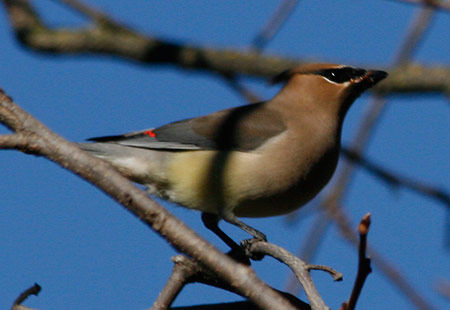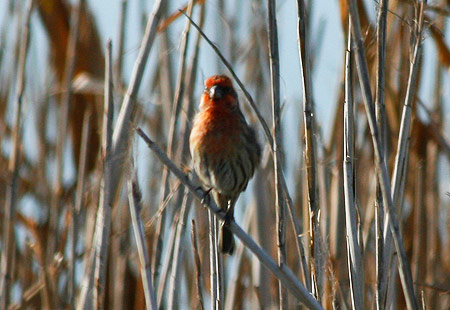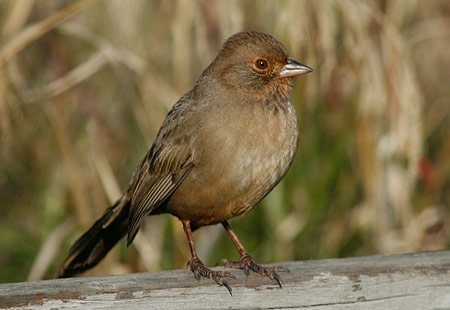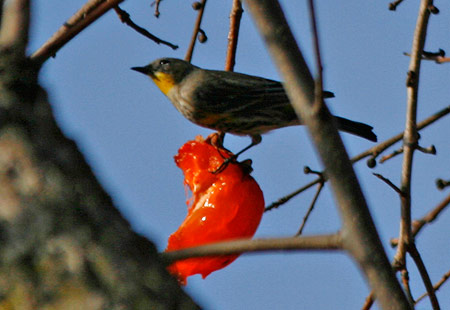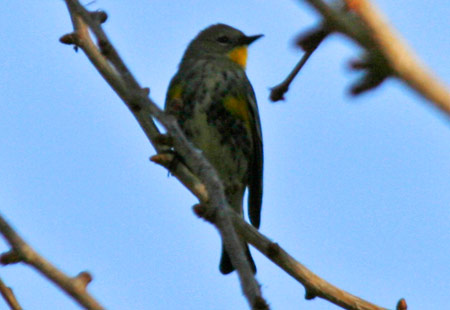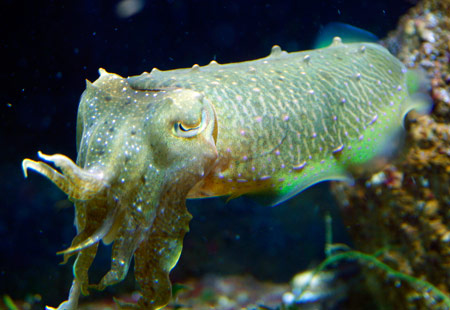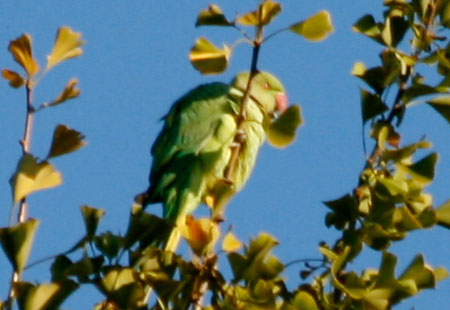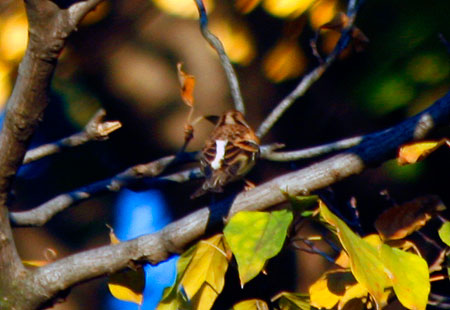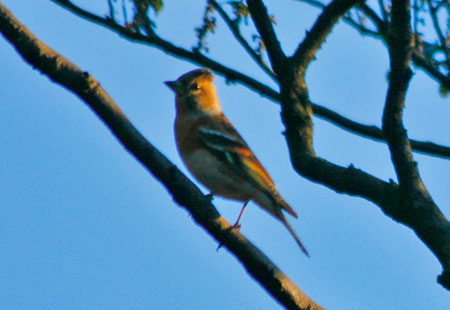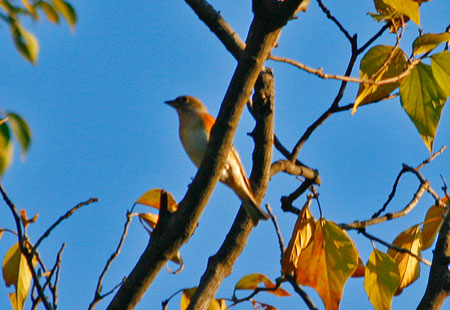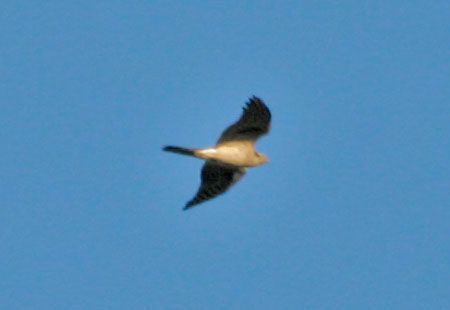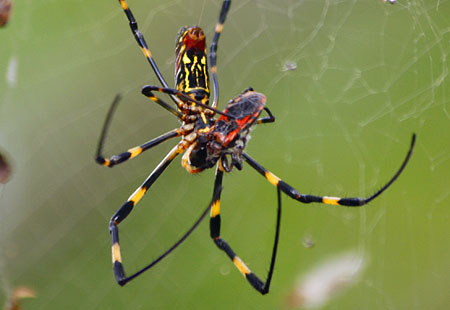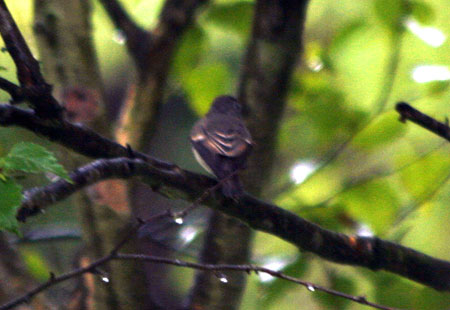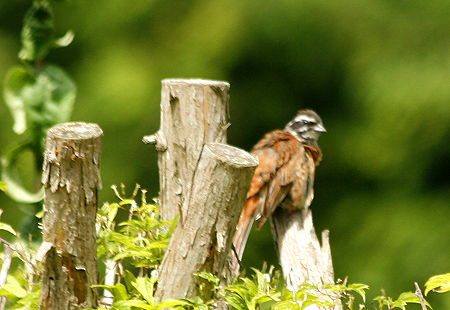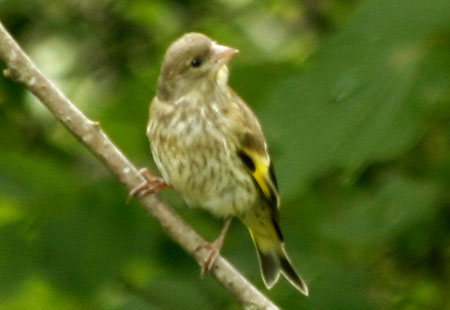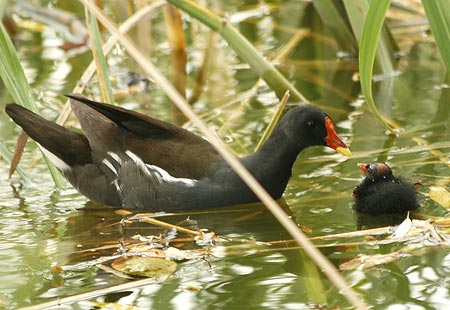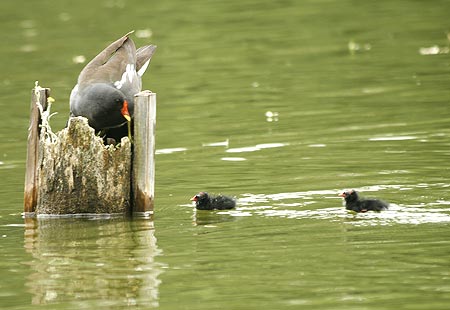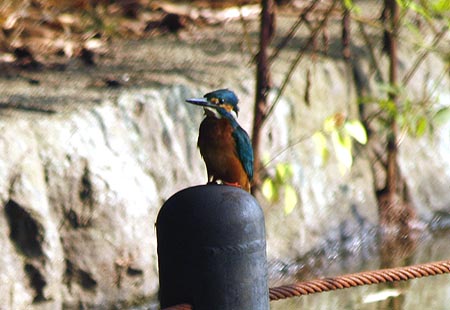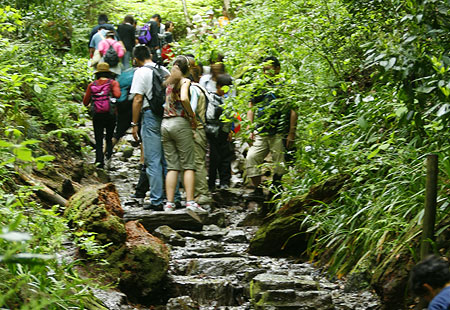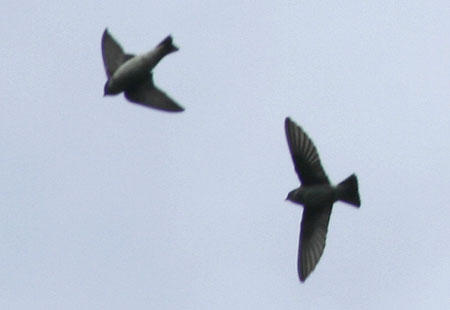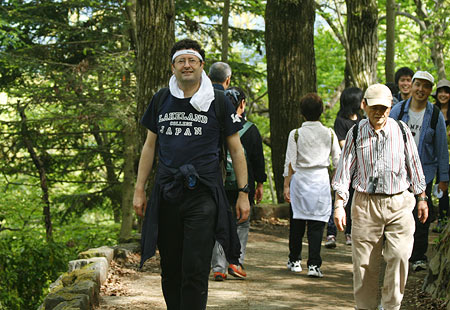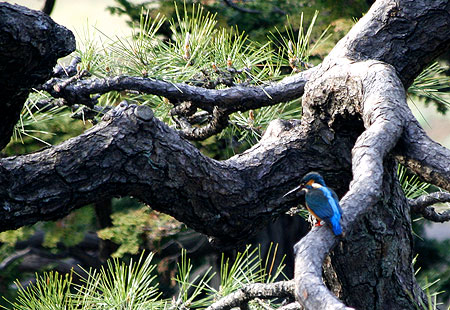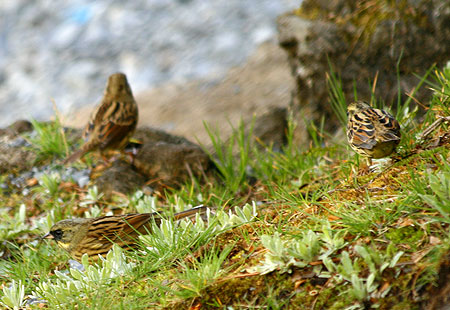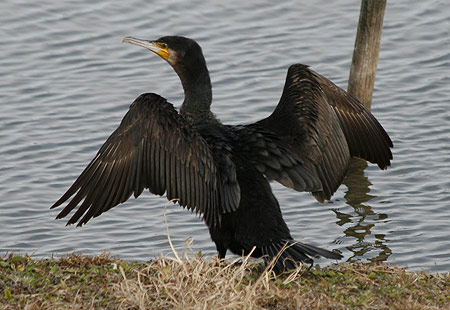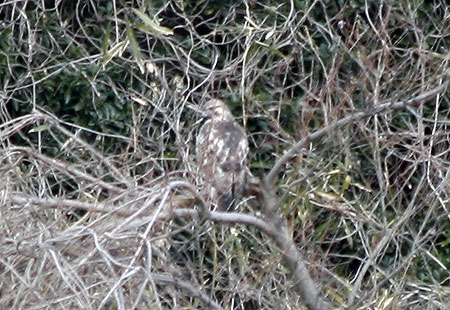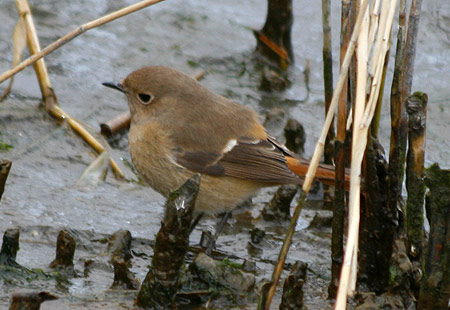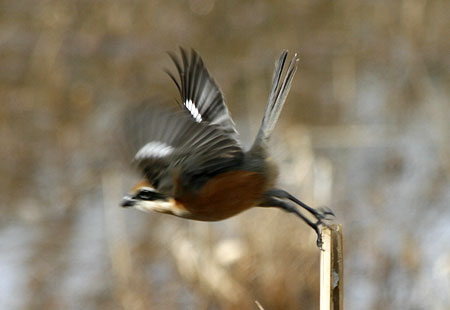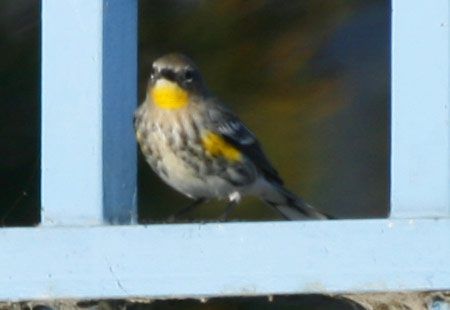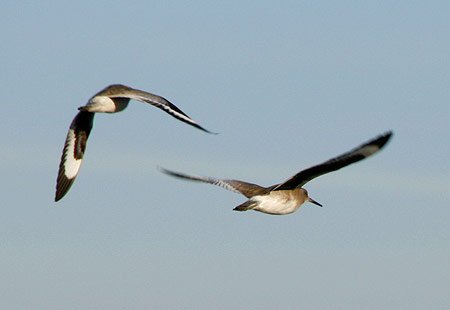I went to a few good birding spots along the S.F. Bay Area wetlands, specifically at the Marsh Road and Embarcadero Boulevard termini, where tons of birds are known to gather. And I wasn’t disappointed. One of the strangest-looking birds I caught was a Northern Harrier:



In addition, I got this Red-Tailed Hawk as it flew away; apparently, it had been hiding in a bush not more than ten feet away from me. I knew it was a predator taking off mostly because all the other birds scattered when he took off.

With both the above birds, I saw them in flight suddenly, and only had seconds to react. With my S1-IS, I would have completely missed both these birds unless my camera was on and ready to shoot, but only if (a) I could track and zoom on the bird successfully–hard enough just to do that–and (b) successfully focused on the bird, something almost impossible to do. With the XTi, I just raise the camera zoomed out to 70mm, center on the bird, and zoom in all in one swift motion, and then snap-snap-snap-snap-snap. The focus usually gets it right the first time, and one setting on the camera has constant tracking on the focus, great for birds flying toward and away from the camera. The max zoom on the XTi is a bit better than the S1-IS, but the megapixels catch the extra details that would have left the S1-IS image lacking.
In short, none of the above shots would have been more than a brown smudge with the S1-IS, if I was lucky enough to get anything at all.
Here is the American Avocet, a common but lovely bird, and a signature bird with some birding organizations. The first image has a larger version; the last two are tracking shots of an Avocet in flight and making a landing.



There were also the closely-related Black-necked Stilts (very similar to Japanese Black-winged Stilts):
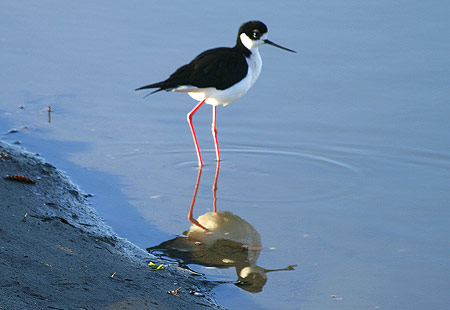
There were also a number of different birds in the related sandpiper family–but frankly, I have such a hard time differentiating them (they are often even harder to tell apart than gulls), I didn’t want to take the time and trouble cataloging them.
There were also two Great Blue Herons (similar to the Japanese Grey Heron) in attendance:


There was also a Great Egret, but I didn’t get a good photo of it (too distant, and over-exposed somehow).
To my surprise, there were four or more rather large Black-crowned Night Herons in attendance, including one rather scraggly, mangy-looking one (both have larger versions on click).

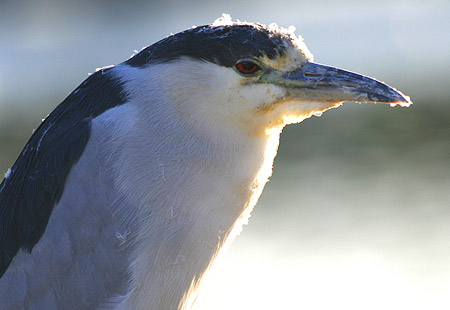
There were also, of course, a good number of ducks. Northern Shovelers, Green-winged Teals, Northern Pintails, Canvasbacks, Mallards, and more. At the Duck Pond at the end of Embarcadero Boulevard, a lot of these birds were easy to approach, including Mallards:

Canvasbacks at Marsh Road were somewhat more skittish:

Two slightly more unusual birds were the female Bufflehead (too distant for a decent shot), and two Common Goldeneyes, one male and the other female:




Doesn’t that last shot make it look like the duck has glowing yellow eyes?
Now this duck in the center is tricky:

I swear, it looks like a black duck with a gold-leaf streak on its front. In actuality, it’s a Green-winged Teal, a light-colored duck–but this one is in the shade. The gold-leaf coloring is where the sun comes through between the rock and the breast of the duck in front of it. But the contrast is misleading–from the surrounding shadow, it doesn’t look like the duck should get that dark. The giveaway for the bird’s ID is the vertical stripe on its side–unique to this particular Teal.
There were also a gaggle of geese nearby–a mixed group of Chinese Geese and Greylay Geese:


And, of course, a lot of Canada Geese, these ones flying in flocks overhead:

And speaking of getting close up…


Those are non-reduced images, the full-pixel images, cropped. Here are reduced images that give a better view of the American Coot and the Ring-billed Gull:


This is probably also a Ring-billed Gull, just younger–between 1st summer and 2nd winter:

This is probably a Double-crested Cormorant–unfortunately, a rather uninteresting-looking juvenile, and not the more flamboyant adult with breeding plumes.

There were other birds as well; White-crowned Sparrows as well as several other sparrows, but one that stood out a little was the Golden-crowned Sparrow:


You can just make out the yellow on top of its head. There was also the usual Black Phoebe:
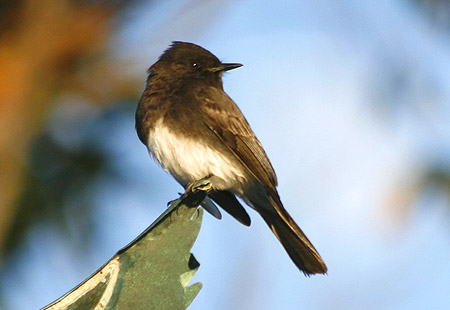
And there were several other birds as well–but that’s certainly enough for tonight. I’ll finish with an interesting moon shot; as a bonus, there’s a much larger version that could be applied to your Desktop if you want:









